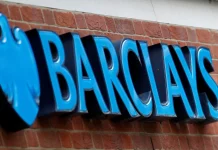To a group of research student of ECAL interaction network, their project work on the effects of sensory interactions such as smell and colour and how they can be replicated, must have come as an exciting start, sometime ago.
Yet, they may not have guessed the depth to which their research could hold a whole series of possibilities in the field of research and development of this scientific knowhow for wider applications.
Code named ‘Bouquet’, the project attempted to replicate and substitute the natural phenomena of synesthesia, where the human sensory abilities are crossed between the sense of smell and the sense of identifying colors. The probe opened new vistas of learning and interest in developing sensory substitution technology, a new high in scientific application knowhow.
Introducing the possibility of reaching out to ‘smell-based user interface procedures’, the smell sensory perception holds tremendous potential for AR and VR applications, says a leading scientific expert.
According to the study, the human brain is so structured as to capture the sense of smell as a very evocative perception.
That part of the human brain which processes smell, known as olfactory cortex, is p[art of the same system that processes emotional and memory stimuli within the brain.
This is the reason why when someone captures a whiff of a nostalgic smell, memories of the past are raised up within his system. Eg : Pure freshly ground filter coffee smell reminds one of grandmother’s kitchen back in a South Indian village home.
The study also concluded that the sense of smell in humans is heavily underestimated and misunderstood. A recent neuro-scientific study revealed that human ability to smell is even more powerful than that of trained dogs used by police.
A unique area where the sensory perception of smell has been exploited for artistic values is in the recent advancements in ‘branding’, used by commercial artists in designing their communication interface.
Using this sensory perception as a creative tool for total branding experience, artists and designers have been able to create an all-round experiential communications for branding promotions during their product-to-customer experience.
Much has to be explored in this area, but a beginning has been made, feel industry experts.









